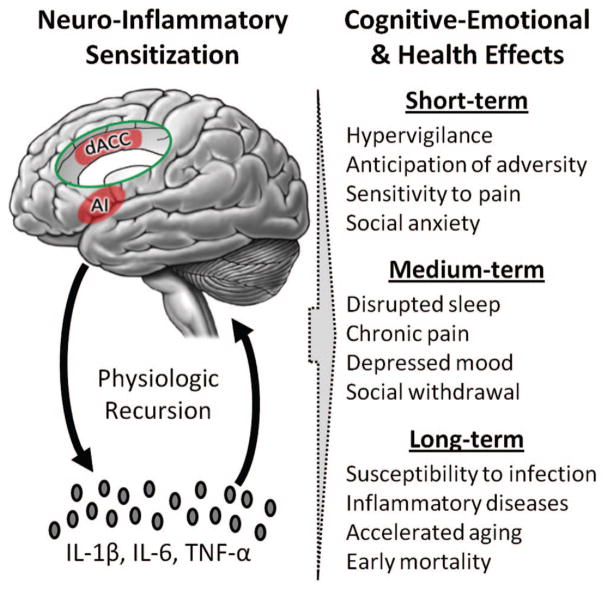Figure 3.
Neuro-inflammatory sensitization to adversity. Bidirectional links between the brain and periphery allow the brain to regulate inflammatory activity, and inflammatory activity to in turn influence neural processes in the brain. This dynamic is initiated by experiences of early life stress or chronic adversity, which promote a proinflammatory skewing of the leukocyte basal transcriptome (i.e., the conserved transcriptional response to adversity [CTRA]) that feeds back on pain-related neural systems to perpetuate subjective perceptions of threat. Brain regions involved in this process include the anterior insula (AI) and dorsal anterior cingulate cortex (dACC, shown in the insert). As a result of this physiologic recursion, experiences of social-environmental adversity can become biologically embedded and sustain perceptions of threat for months or years after the original social-environmental impetus has passed. The consequences of these dynamics are multifold and start with increased hypervigilance, chronic anticipation of adversity, sensitivity to pain, and symptoms of social anxiety. As activation of the CTRA persists, somatic and affective symptoms of depression may develop. Finally, after years of sustained engagement, these dynamics may confer increased risk for inflammation-related disorders, infection, accelerated biological aging, and early mortality (see Eisenberger & Cole, 2012; G. E. Miller, Chen, & Parker, 2011; G. E. Miller & Cole, 2012; Slavich & Cole, 2013). IL-1β = interleukin-1β; IL-6 = interleukin-6; TNF-α = tumor necrosis factor-α.

